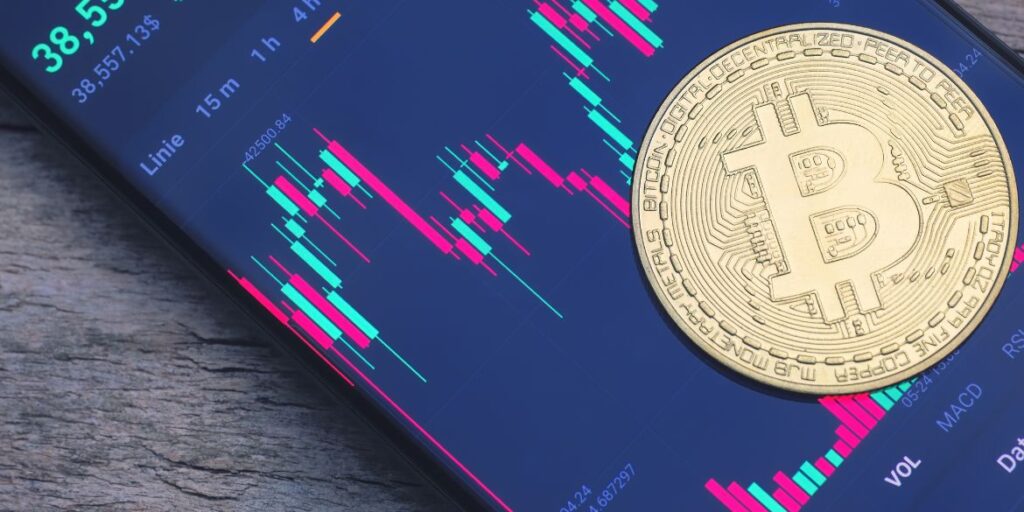[fusion_dropcap color="#000000" class="fusion-content-tb-dropcap"]O[/fusion_dropcap]ver the past decade, the internet has revolutionized almost every aspect of our lives, and passive income trends are no exception. From creating new business models to making investments more accessible, the Internet has brought passive income opportunities closer to ordinary people than ever before. Today, with just a few clicks, people can learn, invest, and earn in ways that were unimaginable just a few decades ago. Understanding the importance of passive income has become essential, especially as more people realize the need to outpace inflation and secure a comfortable retirement.
The Internet’s Impact on Passive Income
The internet has democratized access to financial knowledge, transforming how people generate passive income. Previously, generating passive income often felt like an exclusive club reserved for those with financial expertise. Today, the internet has erased that barrier, allowing anyone with access to a computer and an internet connection to find countless ways to make money, even while they sleep. By providing instant access to vast amounts of information on investment options, the Internet has opened up a world of possibilities to people around the globe.
| Key Changes | Impact |
|---|---|
| Global Access to Information | Individuals can now learn about various income strategies without costly advisors. |
| Accessible Financial Platforms | Platforms like Robinhood and Fundrise make investing easy and affordable for beginners. |
| Direct Connections to Experts | Insights from industry leaders are available via online courses, YouTube, and podcasts. |
| Self-Education Tools | Blogs, webinars, and online classes simplify learning about complex investment options. |
Passive Income: Then vs. Now
Just a decade ago, passive income was primarily limited to traditional investments and required substantial upfront capital. Most people weren’t aware of financial strategies, and passive income was often seen as exclusive to the wealthy. Today, resources like The Cornerstone Contract’s guide on passive income have democratized access to strategies and simplified the process.
A Comparison of Passive Income Trends
| Aspect | 10 Years Ago | Today |
|---|---|---|
| Accessibility | Restricted to those with financial advisors and wealth | Open to anyone with internet access |
| Investment Types | Limited to stocks, bonds, and real estate | Includes e-commerce, digital content, crypto, and P2P lending |
| Knowledge Sources | Primarily through financial advisors | Abundant free resources and self-learning options |
| Audience Reach | Local or through exclusive networks | Global audience with unlimited potential |
The Power of Online Financial Education

The internet has fostered a surge in financial literacy, particularly in understanding how inflation and investment growth impact wealth. Ten to twenty years ago, many people were unaware of how inflation could erode their savings and the importance of investments that outpace it. With the internet’s vast resources, individuals are now able to understand financial concepts and apply them to their own lives. This shift has empowered more people to build passive income strategies that provide financial stability and independence, helping them avoid the pitfalls of relying solely on a salary. Learn more about how passive income trends have evolved and gain insight into the strategies that can protect wealth against inflation.
Popular Passive Income Streams Today
Today, passive income options are almost limitless, and many of them have been created or enhanced by the internet. Real estate crowdfunding, digital assets, and peer-to-peer lending have become popular avenues, especially among younger generations who seek non-traditional income sources. The internet has provided platforms where users can explore, compare, and engage in these types of investments without extensive financial knowledge or initial capital. For a detailed look at passive income programs that align with modern financial goals, visit The Cornerstone Contract’s investment funds.
E-commerce and Dropshipping: Online Business Models

E-commerce and dropshipping are among the most accessible ways to generate passive income online. With drop shipping, individuals can set up an online store and fulfill orders through third-party suppliers, minimizing inventory and upfront costs. This model has become increasingly popular thanks to the rise of platforms like Shopify and Amazon, which make it easy for anyone to start a business. Although e-commerce involves some initial effort, it can become a passive income stream as automated systems handle most processes once set up. However, understanding the nuances of these online models is key, so exploring common pitfalls and misconceptions about passive income can be helpful for beginners. Here’s how it works:
- Low Startup Cost: Dropshipping minimizes inventory and fulfillment costs.
- Passive Revenue Potential: With automation, e-commerce can generate income with little ongoing effort.
- Challenges: Competitive market and marketing costs.
Digital Content: Blogs and YouTube

With the rise of social media and digital platforms, content creation has become a popular way to generate passive income. Bloggers, YouTubers, and influencers monetize their content through ad revenue, sponsorships, and affiliate marketing. Platforms like Google AdSense, Patreon, and affiliate networks have made it possible for creators to earn income by sharing their passions or expertise online. While building an audience requires consistent effort, monetizing content eventually provides a steady income stream, often with little additional work. Blogging, YouTube channels, and social media influence offer lucrative revenue streams.
- Revenue Sources: Ad revenue, sponsorships, and affiliate marketing.
- Audience Reach: Platforms like YouTube and Instagram offer a global audience.
- Effort vs. Income: Audience-building takes time but can yield steady income.
Stocks & Crypto: Online Access

Online brokerage platforms and investment apps have made it easier than ever to invest in stocks, ETFs, and even cryptocurrencies. Before the Internet, stock trading required working with a broker and a significant understanding of the markets. Today, anyone with a smartphone can start investing, and platforms like Robinhood and Coinbase allow users to enter markets that were once reserved for financial professionals. Cryptocurrency, in particular, has emerged as a high-risk but potentially high-reward avenue for passive income, as coins and tokens often appreciate over time or offer staking options for additional gains. With apps like Robinhood and Coinbase, investing in stocks and cryptocurrencies has become accessible to everyone.
- Key Benefits: Low barriers to entry, fractional shares, and easy access.
- Risks: Market volatility, especially in cryptocurrency.
- Getting Started: For a guide on selecting the right passive income strategy, see key investment factors.
Real Estate Crowdfunding: Doors to Property Investment

Real estate crowdfunding has opened doors to property investment without large capital. Platforms like Fundrise and RealtyMogul allow people to invest in real estate projects and earn income without owning a property. Explore these investment options to see how real estate crowdfunding fits your goals. This passive income model is growing in popularity:
- Small Initial Investment: Some platforms allow investments as low as $500.
- Passive Income Potential: Investors earn from rental income or property appreciation.
- Reduced Barriers: Real estate once reserved for the wealthy is now accessible to more investors.
Peer-to-Peer Lending
P2P lending platforms connect borrowers with investors, creating passive income opportunities. Platforms like LendingClub offer flexibility, allowing investors to lend based on risk preferences. However, diversifying portfolios is crucial due to potential borrower defaults. For secure lending options, check out term loans that contribute to passive income.
- Platforms: LendingClub, Prosper, and others.
- Earnings: Investors receive regular interest payments.
- Considerations: Loan defaults are a risk; diversifying loans can reduce this.
The Rise of Financial Independence Awareness

The internet has fueled a movement toward financial independence, with online communities like FIRE (Financial Independence, Retire Early) encouraging people to achieve financial freedom through passive income. Forums, blogs, and social media groups have made it easier for individuals to share strategies, discuss challenges, and support each other on the journey to financial independence. The wealth of information and support available online has made it possible for people to set and pursue ambitious financial goals, inspiring a new generation to prioritize long-term wealth creation.
Impact of the Financial Independence Movement
- Encourages smarter, long-term financial planning
- Increases awareness of passive income potential
- Provides community support and shared strategies
Challenges and Risks of Internet-based Passive Income

Despite its many benefits, internet-based passive income also comes with risks. With the abundance of online opportunities, scams and fraudulent schemes are unfortunately common. Investors must conduct thorough research, read reviews, and verify the legitimacy of platforms before committing funds. Additionally, the volatility of certain markets, such as cryptocurrency and P2P lending, requires a cautious approach and a diversified portfolio. By staying informed and careful, individuals can minimize these risks and make the most of the internet’s passive income potential. Here’s what to watch out for:
- Scams and Fraud: Research platforms carefully to avoid scams.
- Volatile Markets: Cryptocurrency and P2P lending have high returns but also high risks.
- Reliable Sources: Learn from trusted resources, such as this guide on overcoming passive income challenges.
Getting Started with Passive Income in Today’s Digital Era

For those new to passive income, starting can seem overwhelming, but with the right approach, it can be straightforward. Beginners should start by exploring online resources and platforms that offer secure investment options, such as ETFs, real estate crowdfunding, or P2P lending. It’s also wise to join online communities focused on financial literacy, as they offer a wealth of knowledge and support. Finally, starting small and gradually diversifying income streams can help new investors build experience without excessive risk. Here’s a step-by-step guide to getting started:
- Leverage free resources, including blogs, webinars, and courses.
- Begin with lower-risk platforms like ETFs or P2P lending.
- Engage with online groups like FIRE for support.
- Once you gain experience, diversify to include stocks, crypto, or real estate crowdfunding.
For funding options, explore business credit programs here.
The internet has transformed the world of passive income, making financial security and independence accessible to almost anyone. By offering easy access to tools, information, and investment options, the Internet has empowered people to create multiple income streams and secure a stable financial future.
Frequently Asked Questions (FAQs)
What is the most popular internet-based passive income source?
Content creation, real estate crowdfunding, and investments through apps are some of the most popular options today.
Is it risky to invest in internet-based passive income?
While there are risks, thorough research and careful diversification can help manage them effectively.
How do beginners start with passive income online?
Beginners can start with accessible platforms like ETFs, crowdfunding, and P2P lending while exploring online resources.
Can passive income replace a full-time job?
Yes, though it requires time, effort, and diversification. Many achieve financial independence through multiple income streams.
Is it necessary to have financial knowledge to succeed in passive income?
Basic financial knowledge is helpful, but online resources provide accessible information for beginners to start confidently.


Leave a Reply